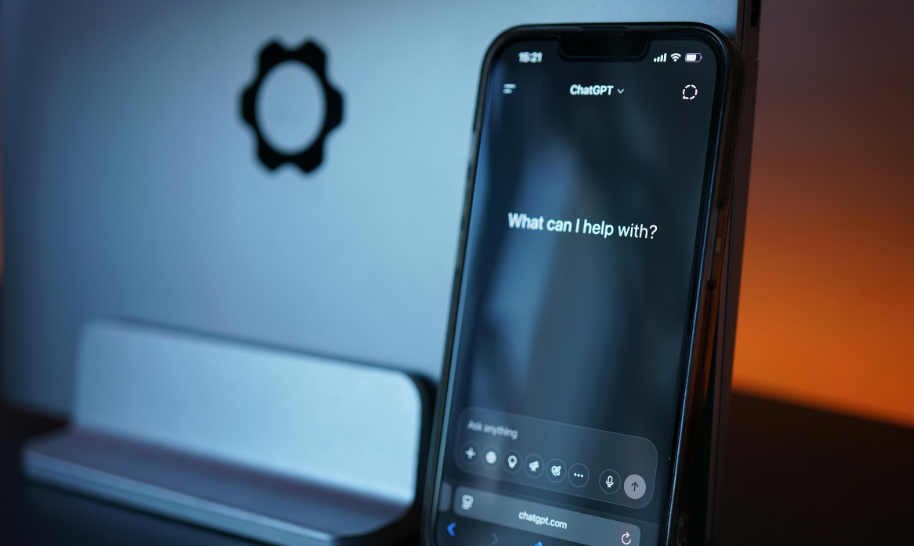IoT (Internet of Things) is one of the newest technologies that is quickly growing in popularity. According to a survey, it was one of the most frequently offered services at software development outsourcing companies worldwide. You can select any Custom IoT software development company or hire an individual developer according to your budget and requirements for IoT web development services.
At present, the Internet of Things (IoT) is one of the hottest topics being discussed online and can have profound effects on any area, from software, web development and personal lives - because everyone depends on it in this digital era.
IoT will significantly influence future web development. Here in this blog post, we'll cover all of its vital points that help you gain an understanding of IoT, its relationship to web development, integration of IoT into web development processes and impacts, among other topics.
Benefits of IoT in Custom Web Design & Web Development
While the Internet of Things will affect many aspects of life, a key area it will touch will be custom web designing and development services. IoT promises to transform the custom website development process drastically - here are its key benefits in web design and development:
#1: Resilient Backend
One of the major impacts of IoT on web design and development is creating a robust backend. A backend serves to store data and process requests behind the scenes, so a reliable backend is key for websites.
With IoT, this process becomes significantly more efficient as more devices connect to a website and access its information. Website designers and developers now need to focus less on backend development and maintenance and more on creating an appealing front end that appeals to users.
An example would be a retail site connecting its Point-of-Sale (POS) terminal, inventory management system, and customer relationship management software for an enhanced shopping experience.
#2: Improved Privacy & Security
IoT can also aid website privacy and security by tracking devices' movement and collecting user activity data to help identify cyberattacks with web designing services and prevent future incidents.
Imagine that a hacker attempts to gain entry to your database by exploiting a vulnerability in its code; IoT could quickly identify and stop this attack thanks to all the data being accumulated by connected sensors. By harnessing insights gleaned from this data, website owners could prevent attacks more efficiently than ever.
#3: Compilation
IoT web development differs significantly from conventional web development when it comes to its scalability and security. IoT collects real-time sensor data that are processed into filterable information before being transmitted into or out of the cloud for storage and transmission. There may be instances in which processing large amounts of information causes delays on networks, resulting in any possible data loss due to issues in networking infrastructure; any loss would be unacceptable.
Businesses increasingly prefer hiring dedicated web developers with extensive knowledge and experience working on platforms such as Angularjs, C, Ionic, JavaScript, and Laravel to develop IoT applications. These platforms enable organizations to scale IoT applications.
Various applications on the market have been created using the programming languages and frameworks listed.
-
Businesses are turning to web developers with expertise in Laravel to develop Internet of Things projects like Jewelbots - friendship bracelets developed using the Laravel framework that displays vital data into mobile interfaces.
-
Other companies are opting to build custom Internet of Things-powered home automation solutions using AngularJS and NodeJS for their clients.
Additionally, when creating IoT applications, data transmission must take place through proven protocols, such as XMPP and AMQP, for real-time communication and receiving/sending message-oriented data, respectively.
#4: Chatbot Integration
IoT can enhance customer service by seamlessly incorporating chatbots into websites. Chatbots are computer programs designed to simulate conversations with human users. They are ideal for businesses to interact with customers quickly and accurately without needing an on-staff support team.
Websites using IoT devices might employ chatbots to answer customer inquiries regarding product availability, shipping details, and feedback about their experience with the website.
#5: Increased Web Speed
IoT can make customized web development solutions faster by consolidating data from various sources into one location for real-time analysis and processing or acting upon it accordingly. As a result, this technology can speed up internal processes by consolidating information in one place for quick processing into actionable insights that feed feedback into the system.
For example, Businesses could utilize IoT to collect information from multiple stores, enabling managers to monitor real-time operations and quickly make decisions that impact the entire company instead of using historical data collected over time.
#6: More Efficient Data Transmission
IoT devices typically communicate using the Internet, a standard network for exchanging information among networks. This makes their transmission faster and more efficient due to an infrastructure already set up that facilitates such information exchange.
Companies using IoT can transfer crucial information between offices and warehouses quickly instead of waiting for hard drives or disks to collect it and send it out.
For example, A business may utilize IoT to communicate with its warehouses and send real-time alerts when inventory needs to be reordered to avoid shortages.
#7: Live Insight and Responses
IoT provides web developers with real-time insight and responses for developing dynamic websites that adapt and change in real time by monitoring user interactions on the website and then providing feedback, which you can use to optimize it further.
For example, Online retailers can leverage IoT technology to keep an eye on which items customers view or add to their shopping cart and use this data to suggest similar things or offer discounts on selected products.
#8: Intuitive and User-Friendly Interface
A good user interface should always be intuitive, interactive, and fluid. IoT web developers must still adhere to best web design practices that ensure compatibility with mobile devices so users can derive maximum usability benefits from IoT devices. Since 2013, the Internet of Things sector has experienced explosive growth; now, most homes contain devices that can be managed and monitored using smartphones or virtual assistants, positively transforming lives throughout.
IoT (Internet of Things) is the new, revolutionary technological wave that is completely upending existing technologies. Have you seen intelligent traffic signals with real-time detection of traffic flow and management, implementing real-time control of these signals accordingly? Well, that is what IoT is all about: connecting devices - like traffic signals or intelligent traffic lights - to the Internet. Hence, they all work in harmony together seamlessly.
Smartwatches are one example of IoT applications which have begun its rapid proliferation. Users are able to connect them seamlessly with iOS and Android devices. Furthermore, Microsoft Cortana, Apple Siri, and Echo's Alexa are other widely utilized IoT applications.
#9: Conquer Coding Challenges
One of the primary difficulties companies encounter while web development is related to coding standards changing quickly across the web and companies needing help keeping up with them, leading them to struggle every day to match these ever-evolving standards. A solution for these ever-evolving coding hurdles would be creating a well-thought-out plan of attack against them.
Developing an efficient strategy can only be accomplished when team leaders possess all of the coding standards and disciplines, as well as impart knowledge quickly to other team members so as to save them valuable time.
#10: Power Management
Everyone knows that software or web apps run programs running on the backend that consume battery, leading to reduced communication. In order to combat battery drain issues and to lower power usage costs effectively, web developers should create an attractive design layout that reduces power usage - so always plan carefully for power management prior to any development, whether software, web, or app development projects.
#11: Energy Management
IoT devices demand effective power management to operate effectively. As these are small-sized devices with batteries powering them, protocols must be put into place to limit consumption when the user isn't performing tasks. With IoT taking hold and completely altering the web development landscape, we must adapt.
Web developers need a deeper knowledge of coding, encryption technologies, programming, and database management; companies should devote additional money to the training and employment of these developers.
#12: Virtual Assistant
Internet of things in the form of virtual assistants like Siri from Apple, Alexa from Amazon Echo, Cortana from Microsoft, and Google have become very popular these days and perform simple tasks for us.
As more tasks need to be accomplished, so does the complexity of custom web apps increase significantly. Since they act as virtual personal assistants for users, customization must meet individual user needs perfectly.
Internet of Things for web app development is key here; it must store enormous amounts of data to facilitate task execution while continually updating it as the task proceeds. Furthermore, its visual assistant should engage users so that they remain interested in using the device.
#13: Big Data
Handling data is one of the key elements to the development of IoT, as its success depends heavily on its capacity for processing it quickly. The Internet of Things progresses by regularly providing real-time updates of real-world data sets.
An IoT device must regularly gather new information, feed it back into its system, and store it so it is ready for response when a user makes similar requests in the future. To maximize the performance of such a device, its balance between data increase and response decrease must be maintained; to accomplish both simultaneously requires meticulous web development solutions.
Impact of Internet of Things on Custom Web Development and Web Design
The Internet of Things has already begun affecting web development, making the underlying web architecture far more sophisticated and user interfaces more functional and interactive.
At present, Internet of Things devices are limited to displaying information and outcomes from a website, service, or custom web application, but soon will facilitate communication across website layouts and operating models more efficiently.
#1: High Bar for Entry
IoT devices demand far greater knowledge in terms of coding, programming, and database management than standard web development does. Web designers who possess PHP, Java, or C programming expertise must seek ways to hone their knowledge further by searching for entry-level IoT development jobs or using third-party platforms like Udemy or Skillshare as resources to gain those abilities before applying directly for these opportunities.
#2: Hybrid Teams for Software Development
Web designers and IoT developers will need to collaborate closely on IoT development and its implications for web design as a whole, leading to software programs, websites, and web-based platforms being developed using hybrid methods. When connecting code with data sources, web designers without in-depth knowledge may need the assistance of their IoT counterparts for successful collaboration.
Developers with experience in IoT who have never worked with web programming or user interface design stand to benefit greatly by working alongside web-based counterparts.
#3: Increase in Overall Level of Difficulty
IoT devices depend heavily on databases to function. Combine that with web development's emphasis on front-end user interfaces, and you have yourself an arduous task ahead. Complex development cycles necessitate new project management attitudes as you embark upon these endeavors.
Development requires using tools like task allocation, milestone definition, and daily and weekly check-ins differently.
#4: Collecting Information Continuously
One of the key challenges of web development lies in gathering user input on live websites. Cookies and search patterns only reveal so much before it's necessary to formulate theories as to why certain features may be more or less frequently utilized than expected.
Since IoT devices rely on databases for their data needs, data flows both ways. Users of IoT devices can collect actionable information that IoT can collect within legal constraints and regulations for future web development iteration projects.
Without the ability of IoT to acquire knowledge and pass it back onto servers for storage purposes, ongoing data collecting would likely become more challenging, and device development would likely become near impossible.
#5: Constructing a User Interface in Real-Time
Due to the widespread adoption of IoT devices, creating dynamic user interfaces is no stranger.
Current web development trends only underscore their significance as designers of user interface and experience design. IoT devices require flexible user interfaces capable of accommodating different user profiles; web developers will have to reassess how they approach user interface design from its core.
Web-enabled IoT devices are typically utilized for research and displaying various forms of data. Infographics, charts, and other visual data formats require IoT devices that can manage their requests due to their nature; web development efforts devoted to working user interface micromanagement will pay dividends in terms of multitasking capabilities provided by IoT devices to their users.
#6: Safety and Security
Unfortunately, IoT devices still fall far short when it comes to digital security. People are worried about the lack of advanced protections in IoT gadgets (especially ones without web development capabilities), which should provide sufficient mechanisms for backing up their code with necessary safeguards against security vulnerabilities.
Web development offers developers the power to enact such measures on IoT gadgets. Hence, they provide necessary access management, user identification, and identity verification features as standard features despite what might appear harmless at first glance.
Conclusion
The Internet of Things is an innovative technology that is rapidly progressing in today's digital world, altering web development significantly and impacting custom app development projects in many ways. IoT provides advanced interactive features that improve users' lives; its popularity will only continue to rise over time.
Customers already making use of IoT devices present businesses with an incredible opportunity for growth. Customers become hooked on using these devices when their experience with them improves and customization increases; to create such devices, web development must meet user needs exactly.
Businesses seeking custom web development services & solutions must carefully consider which factors will make their site development more user-friendly before hiring web development agency. Our website developers offer custom web development solutions; for more information, contact us now!
Start the Conversation
We collaborate with companies worldwide to design custom IT solutions, offer cutting-edge technical consultation, and seamlessly integrate business-changing systems.
Get in TouchUnlock the power of AI and Automation for your business with our no-cost workshop.
Join our team of experts to explore the transformative potential of intelligent automation. From understanding the latest trends to designing tailored solutions, our workshop provides personalized consultations, empowering you to drive growth and efficiency.
Go to Workshop DetailsExplore Our Latest Articles
Stay abreast of what’s trending in the world of technology with our well-researched and curated articles
View More InsightsCost Breakdown to Build a Custom Logistics Software: Complete Guide
Global logistics is transforming faster than ever. Real-time visibility, automation, and AI...
Logistics Software Development Guide: Types, Features, Industry Solutions & Benefits
The logistics and transportation industry is evolving faster than ever. It’s no longer...
From Hurdle to Success: Conquering the Top 5 Cloud Adoption Challenges
Cloud adoption continues to accelerate across enterprises, yet significant barriers persist....
Gen AI for HR: Scaling Impact and Redefining the Workplace
The human resources landscape stands at a critical inflection point. Generative AI in HR has...




